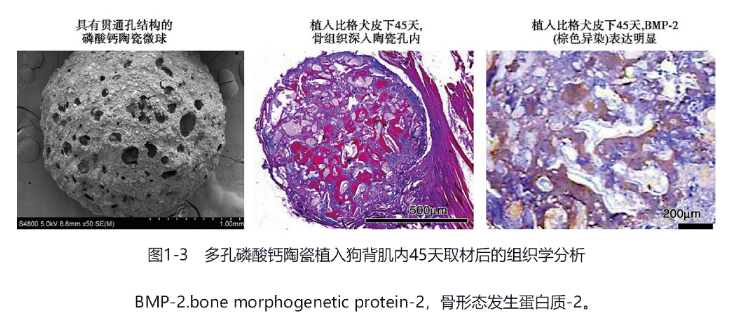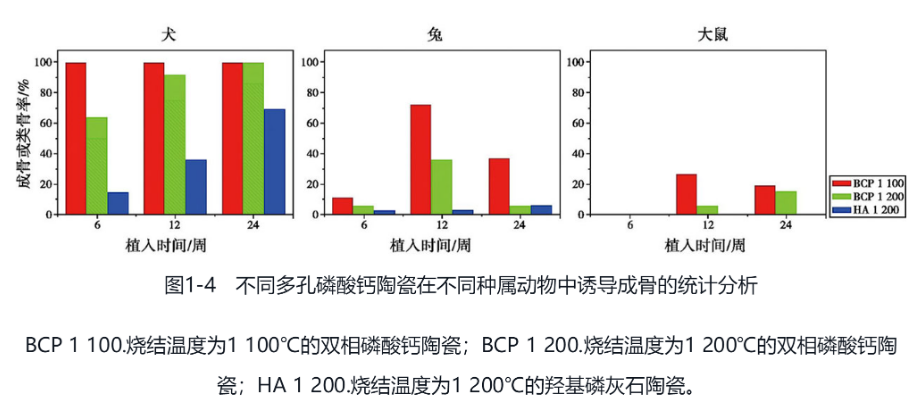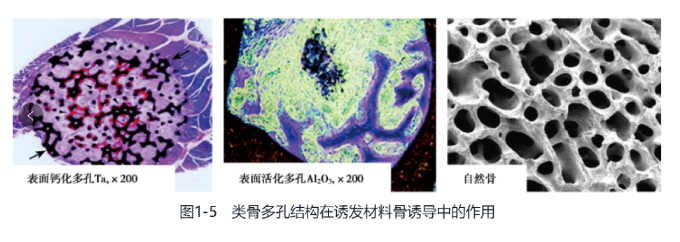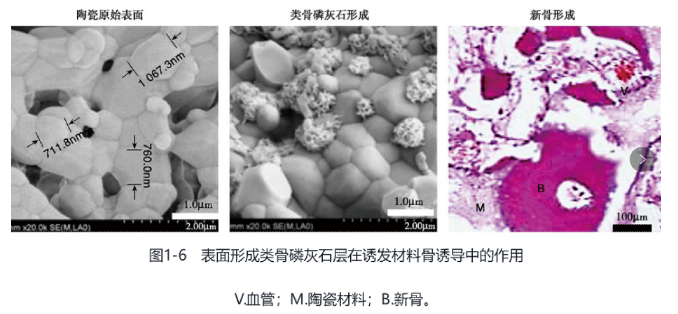Inanimate biomaterials can induce the regeneration of living tissues or organs through their own optimization design instead of adding cells or active factors
As mentioned earlier, bone-induced biomaterials are traditionally believed to be incapable of inducing the regeneration of living tissues.
In the early 1990s, Chinese scientists discovered and proved that certain porous calcium phosphate ceramics can induce bone regeneration (Figure 1-3).

After 10 kinds of porous calcium phosphate ceramics with different composition and structure were implanted into the non-bone parts of 6 kinds of different species of animals, the statistical analysis of more than 10000 tissue sections showed that the bone induction effect of the material was closely related to the material composition, structure and animal species (Fig. 1-4)

Further research reveals that the necessary material factors for inducing the osteoinductive effect of the material are:
Three-dimensional bone-like porous structure and the formation of bone-like apatite on the surface.
Calcium phosphate ceramics with porous and porous walls rich in perforating micropores show osteoinduction,
However, calcium phosphate ceramics with dense or closed pore walls have no osteoinduction.
The existence of three-dimensional penetrating pore structure is the primary determinant of whether the material has osteoinductive properties (Fig. 1-5)

Gene level:
The porous structure can up-regulate the expression of osteogenic genes in cells, which is attributed to the fact that the bone-like porous structure is conducive to the supply of nutrients and oxygen required for new bone formation,
The surface micropores are easier to enrich ions or proteins in the microenvironment.

In addition, the surface of bone-induced material can form bone-like apatite in simulated body fluid or physiological environment in vivo (Fig. 1-6),
This is a surface layer formed by apatite microcrystals with imperfect crystallization under the participation and control of biological macromolecules.
The host microenvironment can also affect the morphology of bone-like apatite on the material surface. Porous calcium phosphate ceramics with different implantation sites and different phase components can form bone-like apatite with different morphology and size.
At the same time, the thickness and area of the surface layer of bone-like apatite have a positive correlation with the amount of material induced bone formation, which indicates that the formation of bone-like apatite is one of the key material factors of material induced bone formation.
A large number of studies have confirmed that the porous titanium metal with bone-like apatite layer formed on the surface after proper surface biological activation treatment can also induce bone formation after implantation in vivo.
This phenomenon not only shows that pore structure and bone-like apatite promote the universality of material induced osteogenesis, but also greatly broadens the application scope of biomaterial bone induction theory